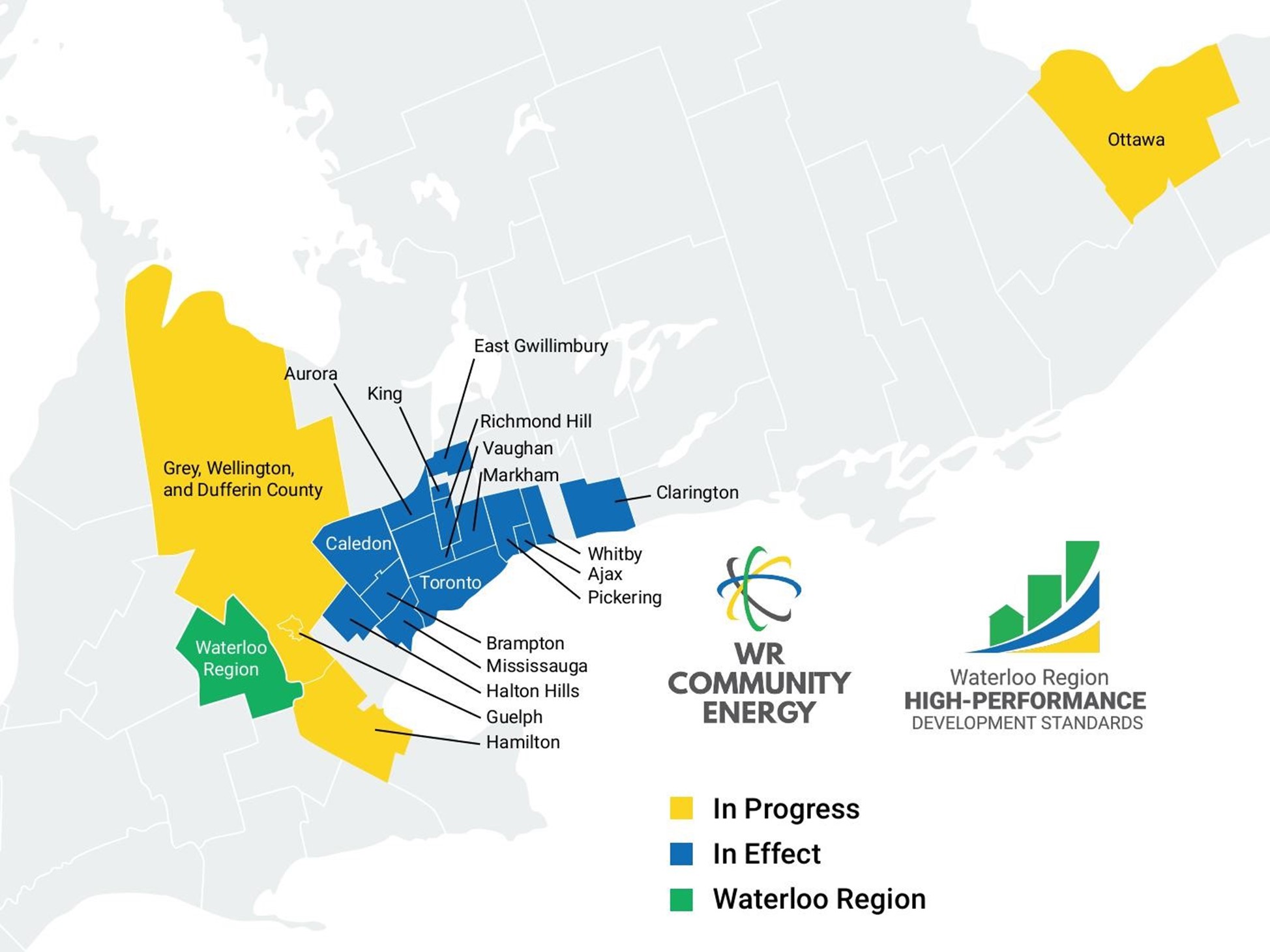Future Ready Development Program
The Future Ready Development Program (initially called the Tri-Country Green Development Standards (GDS) project) is a collaborative initiative between Grey, Dufferin, and Wellington Counties to create a more consistent framework to support the development of healthy and more sustainable rural communities, informed by best practices, existing building credential programs, and local input from municipalities, industry, and residents.
Future Ready Development Program will establish a consistent framework across the Counties making it easier for the development industry to meet and incorporate the metrics into their projects. The final document will include metrics and guidelines that can be applied through all phases of development planning applications right through to construction.

Future Ready Development Program is a set of metrics to support developers and municipalities in building in a way that is more efficient, more affordable over the long-term, more resilient to climate change, better prepared for future climate conditions, and better places to live. These metrics include a range of measures:
-
At the building level (e.g. energy efficiency, sustainable building materials)
-
At the site plan level (e.g. stormwater infiltration features, native and drought resistant plants to prepare for future climate conditions)
-
At the neighbourhood level (e.g. features to make neighbourhoods more walkable and increase access to natural spaces)
Future Ready program provides a range of economic, social, and environmental benefits. By supporting more efficient buildings and developments, they are a cost-effective policy tool that will benefit residents in the future.
Economic Benefits:
-
Making buildings more affordable to heat and cool
-
Reduced municipal infrastructure costs
-
Increased property values
-
Longer lasting building stock
-
Future-ready workforce development
Social Benefits:
-
Improved air quality
-
Promoting healthier and more active lifestyles
-
Increased access to green space
-
More affordable, mixed use housing development
Environmental Benefits:
-
Reduced GHG pollution - In Canada, we rely heavily on fossil fuels to heat our buildings and power our vehicles. This program aims to reduce the reliance on fossil fuels, which creates greenhouse gas (GHG) pollution and contributes to climate change.
-
Better water management
-
Increased green space and biodiversity
-
More resilience to climate change - Municipalities are experiencing increasing climate impacts such as higher temperatures, more severe weather events, threats to agriculture and health. GDS can help ensure new buildings are more resilient to these impacts to help keep residents safe.
The Planning Act provides a framework and legislative authority for municipalities to engage in land-use planning by creating Official Plans, Zoning By-laws, and Community Improvement Plans. Building Performance Programs may be enabled by Official Plans and implemented through draft plan of subdivision, site plan and permitting processes.
To date, 15 lower or single-tier municipalities have implemented a green development standard (GDS) in Ontario. There are also several municipalities currently developing such standards, including the Region of Waterloo, which is similar to the Tri-Counties as another upper-tier municipal government. The map below shows the municipalities in Ontario that have implemented or are in the process of implementing these types of standards.

Some examples include:
The program is initially considering new residential (10 units or larger) development projects. There would be no changes to existing buildings or neighbourhoods.
Working with Dufferin and Wellington Counties will create a standardized process for developers to follow in the whole region. Our work will be informed by development performance programs that have been implemented elsewhere, but customized to reflect the unique needs of this region. The project will include training and support to transition towards future-ready development and attract the needed workforce and industries.
-
March - April 2024: Building awareness of the program among staff, industry, and the general public.
-
May - June 2024: Seeking input from staff, developers, and other stakeholders on what should be considered.
-
August 2024 - February 2025: Creating and refining draft Future Ready Development Program.
-
March 2025 - September 2025: Creating tools to support the implementation of Future Ready Development Program.
-
March 2025 - March 2027: Supporting the implementation of the Future Ready Development Program with a grant-funded staff position.
Background Documents
How can I learn more and get involved?
-
Learn more about similar programs by reading this Municipal Green Development Standards briefing note from the Clean Air Partnership.
-
Sign up for project updates or send us any questions or comments by completing the form below.
-
If you work in the construction or development industry, attend the industry-specific session. Please complete the form below and indicate your role and company to be added to our industry stakeholder list.
Questions? Comments?




